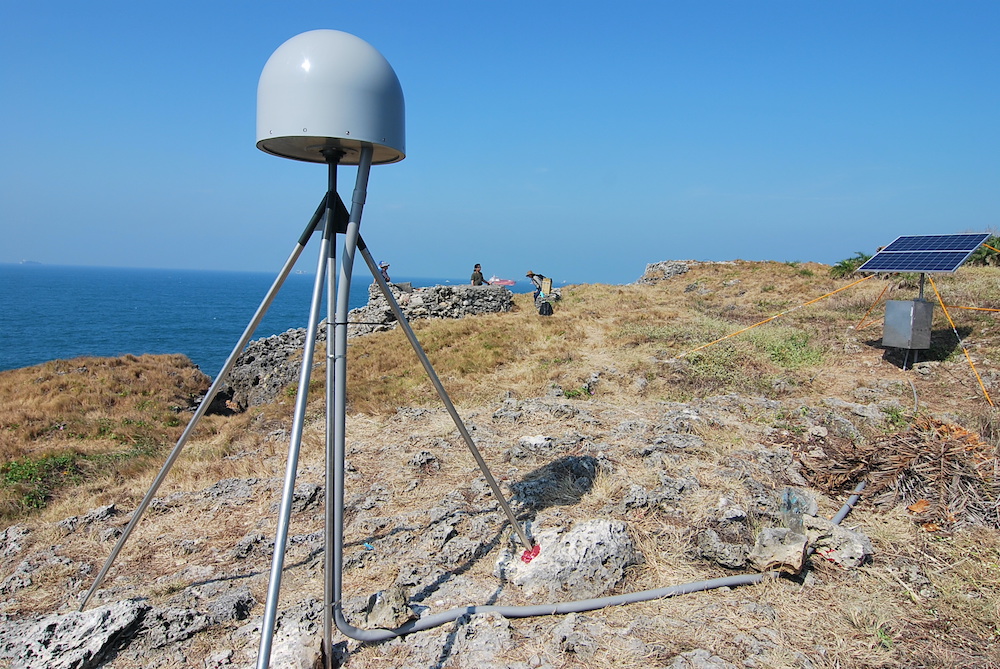GNSS stations

The Centre for Geohazard Observations (CGO) was tasked to install several stations all over the region to continuously record the sea level. This is a relatively new method of recording sea level rise through the use of the Global Navigation Satellite System (GNSS), instead of traditional tide gauges that we have normally engaged. By analysing the GNSS data that was recorded over a long period of time, researchers will be able to determine the sea level in the area where direct-and-reflected GNSS signals are recorded. To achieve optimum usability of the data, the stations are installed near the coastline, where the reflected GNSS signal from the water can be received by the antenna.
In doing so, EOS has collaborated with local research institutions in every geographic location where the GNSS stations are installed. Our first station was installed in Taiwan in 2019, which was achieved with the collaboration of the Institute of Earth Science – Academia Sinica, Taiwan.
Currently, we are focusing on the installation of these stations in Singapore. We aim to install two stations at this stage with the possibility to increase the number of stations in the future. The data from these stations can be used for multiple earth science and climate research projects, as well as land survey control points for government agencies. Hence, with these multiple capabilities, GNSS technology has offered significant and relatively cheap solutions to environmental data acquisition.
In Singapore, we collaborated with local government agencies, and for the installation of GNSS stations, we are collaborating with Singapore Land Authority (SLA). Both EOS and SLA will benefit from the data collected from these stations. While EOS researchers will use the data to study sea-level change, climate, among other research areas, the SLA will be able to incorporate the data from these stations into the existing GPS network and will densify the GPS network.
As the goal is to get the coastal GNSS stations around the South China Sea, we are working closely with local collaborators in Indonesia, Vietnam, and other Southeast Asian countries to install these stations in their land.